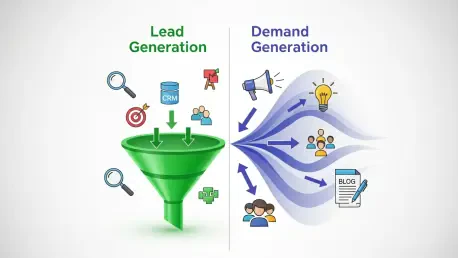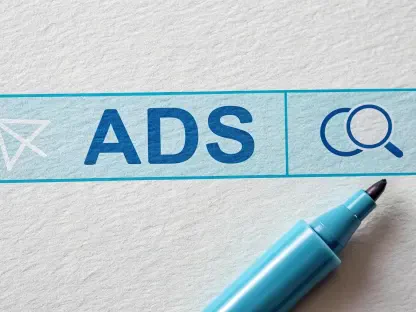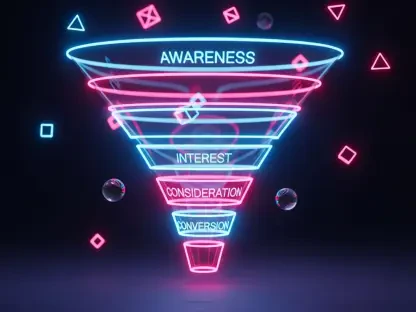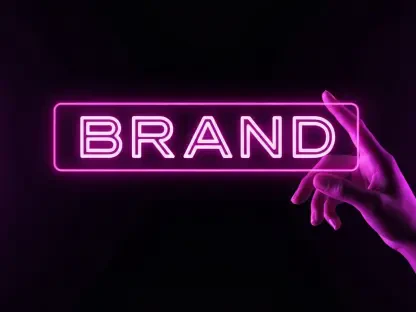Imagine a B2B marketing landscape where only a fraction of potential buyers—barely 1%—are actively in the market for a solution at any given time. This staggering statistic reveals a critical challenge for marketers: how to engage the vast majority who aren’t yet ready to buy while still capturing those who are. This dilemma sets the stage for a deep dive into two fundamental strategies—lead generation and demand generation. Both approaches play pivotal roles in driving pipeline growth and revenue, yet they target different stages of the buyer journey with distinct goals and tactics. This comparison unpacks their unique characteristics, contrasts their applications, and explores how they can work in tandem to address the complexities of modern marketing.
Understanding the Foundations of Lead Generation and Demand Generation
Lead generation and demand generation form the backbone of B2B marketing, each addressing specific needs within the sales funnel. Lead generation focuses on capturing existing buyer intent, targeting prospects in the middle and bottom stages who are already considering a purchase. Its primary aim is to convert interest into tangible outcomes, such as marketing-qualified leads (MQLs) or sales-qualified leads (SQLs), by encouraging actions like form submissions or demo requests.
In contrast, demand generation operates at the top of the funnel, concentrating on building awareness and trust among a broader audience. This strategy seeks to educate potential buyers and establish a brand as a credible solution provider long before a purchase decision is made. By fostering interest and engagement, it ensures a steady flow of prospects who can eventually be nurtured into leads.
The relevance of both strategies is shaped by evolving buyer behavior and market dynamics. Today’s B2B buyers often resist transactional approaches, favoring value-driven interactions over aggressive sales tactics. As a result, demand generation has gained traction for engaging out-of-market prospects, while lead generation remains essential for capitalizing on immediate opportunities. Together, they create a complementary framework for sustained pipeline growth and revenue impact.
Key Differences in Strategy and Execution
Focus and Funnel Positioning
A fundamental distinction between lead generation and demand generation lies in their positioning within the marketing funnel. Lead generation hones in on prospects who exhibit clear intent, aiming for immediate conversions. It targets individuals ready to engage through tactics designed to prompt quick action, often resulting in measurable outcomes like completed forms or scheduled calls.
Demand generation, however, casts a wider net at the awareness stage, prioritizing education over conversion. Its goal is to introduce a brand to prospects who may not yet recognize a need for a solution, creating a foundation of trust and familiarity. For instance, while lead generation might rely on gated content to capture contact details, demand generation often uses ungated resources like blogs or videos to attract attention without barriers.
This difference in focus underscores their respective roles in the buyer journey. Lead generation drives short-term results by harvesting existing demand, whereas demand generation sows the seeds for future interest, ensuring a brand remains top-of-mind when buying intent emerges. Understanding this interplay is critical for aligning marketing efforts with prospect readiness.
Tactics and Tools
The tactical approaches of lead generation and demand generation further highlight their contrasting objectives. Lead generation employs targeted methods such as webinars, paid search campaigns, and demo request forms to attract high-intent prospects. These tools are designed to facilitate direct engagement, often requiring users to exchange information for access to premium content or services.
On the other hand, demand generation leverages broader, less transactional tactics to build visibility and credibility. Strategies include publishing ungated content like thought leadership articles, engaging in social selling on platforms like LinkedIn, and running brand-focused paid media campaigns. A notable example comes from industry shifts, where companies have moved toward ungated content to prioritize reach over immediate lead capture, resulting in significant inbound pipeline growth.
These differing toolsets reflect their unique goals. While lead generation seeks to close the gap between interest and action, demand generation focuses on creating a favorable impression over time. Marketers must select the right mix of tactics based on whether the priority is capturing demand now or cultivating it for later, ensuring resources are allocated effectively.
Metrics and Measurement
Evaluating the success of lead generation and demand generation involves distinct metrics tailored to their objectives. Lead generation performance is typically gauged through immediate, quantifiable indicators such as conversion rates, form completions, and the number of MQLs or SQLs generated. These metrics provide clear insights into how effectively a campaign converts interest into actionable leads.
Demand generation, by contrast, relies on longer-term indicators that reflect brand impact and audience engagement. Key measures include brand search volume, website traffic, and content interaction rates, which signal growing awareness and interest. However, attributing direct ROI to these efforts can be challenging, as the effects often manifest over extended periods, unlike the quicker feedback loop of lead generation.
This disparity in measurement approaches reveals a core tension. Lead generation offers concrete, short-term data that aligns with sales goals, while demand generation requires patience and sophisticated tracking to assess its influence on pipeline health. Balancing these evaluation methods is essential for gaining a holistic view of marketing impact, as each provides unique insights into different aspects of buyer engagement.
Challenges and Limitations in Implementation
Implementing lead generation strategies often comes with hurdles tied to buyer perceptions and conversion efficiency. Many prospects exhibit resistance to overtly transactional tactics, such as repetitive form fills or premature sales outreach, especially if they lack prior awareness of a brand. This can result in low conversion rates and wasted resources if efforts are not supported by a strong foundation of trust.
Demand generation faces its own set of obstacles, particularly around measurement and timelines. Quantifying the impact of awareness-building activities is inherently complex, as outcomes like brand equity or inbound interest are not immediately visible. Additionally, the extended timeframe required to see returns can strain budgets and test organizational patience, especially in environments focused on quick wins.
Both strategies also grapple with aligning with modern buyer expectations, which prioritize value and authenticity over aggressive pitching. Striking a balance between short-term lead capture and long-term market cultivation remains a persistent challenge. Marketers must navigate these limitations by integrating both approaches, ensuring neither is pursued in isolation to avoid diminishing overall effectiveness.
Strategic Synergy and Recommendations for Marketers
Lead generation and demand generation, while distinct in purpose and execution, share a profound interdependence that marketers must leverage. Demand generation builds the essential groundwork of market trust and awareness, creating a receptive audience for lead generation to convert into high-intent prospects. This synergy ensures that efforts at every funnel stage contribute to a cohesive buyer journey.
A balanced approach is recommended, where demand generation initiatives lay the foundation for brand credibility, while lead generation tactics capitalize on readiness to buy. For instance, prioritizing demand generation might be ideal for entering new markets or launching innovative solutions, whereas lead generation could take precedence during product maturity phases or when targeting specific, in-market segments. Adapting the focus based on business objectives and buyer behavior is key to optimizing outcomes.
Looking ahead, marketers should consider integrating these strategies with evolving market conditions in mind. By continuously assessing buyer needs and refining the mix of awareness and conversion tactics, organizations can achieve sustainable growth. The path forward involves embracing this dual framework, ensuring that trust-building and lead capture work hand in hand to maximize pipeline potential and drive lasting revenue impact.









